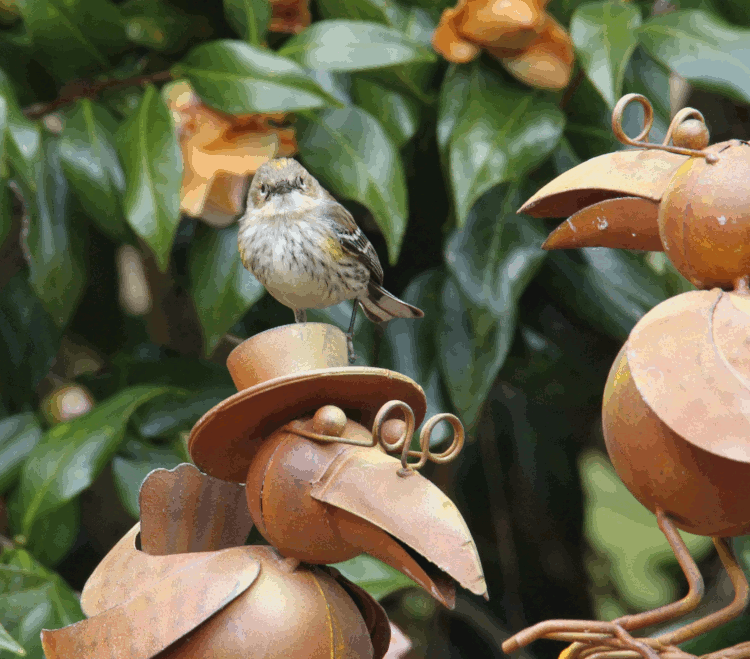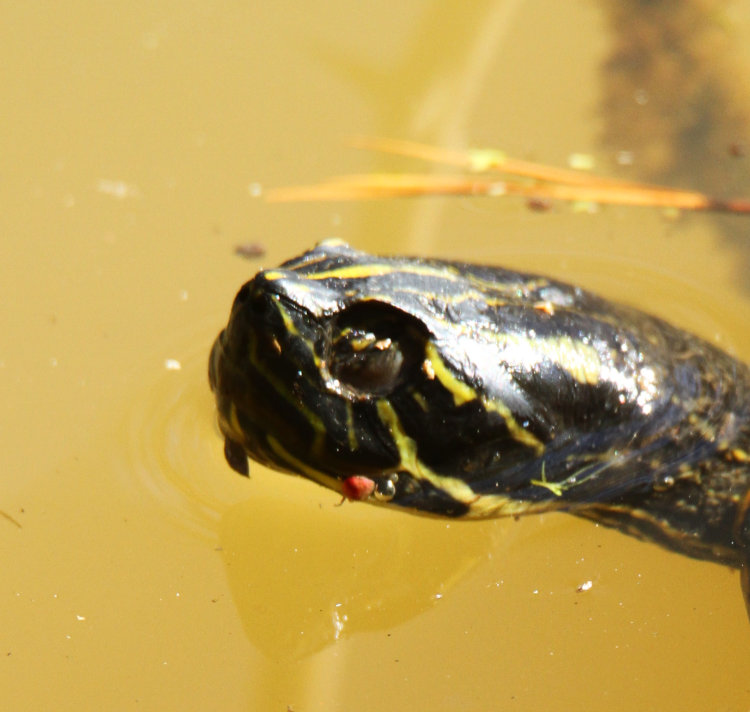This week’s find we credit to The Girlfriend, who discovered this little spud right outside the front door, of all places.

This is, most likely, an eastern mud turtle (Kinosternon subrubrum,) but truth be told, there is a fair amount of variability in markings that cross over with the striped mud turtle, especially in North Carolina where the striped mud turtle is not striped. Given that, I’m not worried about someone looking at these pics and pronouncing me utterly wrong.

This is average size for them, and in fact, I don’t think I’ve seen an adult varying from this by even ten percent – I always liken their appearance to hand grenades. I originally considered this a musk turtle (also colloquially known as a ‘stinkpot’) based on the pungent urine that it produced, which still lingers on my hand as I type this, but there’s a detail that rules this out.

While I don’t openly encourage handling of wild species, I don’t condemn it as ‘interfering’ or anything, since it’s trivial (especially compared to the hazards that they face routinely,) and in cases such as many turtle species, it’s the only way you’ll determine identifying characteristics. The musk turtle has only one hinge to its plastron, not allowing the legs to be fully protected, so this shows that it’s not that species at least; the head is to the right, but you can see the secondary hinge that closes off the hind legs. It also partially demonstrates that mud turtles are kind of like a cross between box and snapping turtles – handling should be done circumspectly, but that’s true of any species; don’t do it if you don’t know what you might be in for (or are offended by your hands smelling rank.)

The turtle was remaining reclusive, and even when put down, it extended its snout only far enough to see that I was still there. I popped the flash to fill in those shadows a little, but the eye is still not really visible.
So I let it be, while pulling up a lawn chair a short ways off and waiting…

… for quite some time – over a half-hour, and this is as far as the turtle peeked out, determining that I still lurked nearby. I amused myself with other pics that I could get from my seat, some of which you may have already seen (I work on these posts in odd order sometimes,) which likely didn’t help because I was aiming the long lens in multiple directions and was obviously not just some lawn decoration, so the turtle stayed put. I eventually went indoors to do some other things, but came back out about 20 minutes later to find the turtle gone, though it didn’t take a lot of searching to find it again.

It was heading purposefully across the yard, out in the open, but stopping to nose down into the ground litter from time to time, eventually emerging again and moving on to another spot to repeat the performance. I’ve since learned that mud turtles are largely but not entirely aquatic, hibernating on land a very short ways underground, in spots with lots of leaf litter but often with at least a hint of sunlight, so they can feel when the days get warmer. That would appear to be what this one was doing – it was quite a nice day, but it’s not expected to remain that way and the turtle might have been looking for a new hibernation spot, though why it was out now, I can’t say. Curiously, you can see some dried algae adhering to the shell, which if my sources are correct, may have been there since before it entered hibernation last fall.

The yellow-bellied sliders and eastern painted turtles in the pond are active as soon as it gets marginally warm, and will be out basking on sunny days, but the mud turtles would seem to have a more seasonal schedule and possibly shouldn’t have been active yet. So is this an anomaly, or is the schedule not that specific? Don’t know, but it’s this week’s find regardless. And now I have to go wash my hands again…





















































































